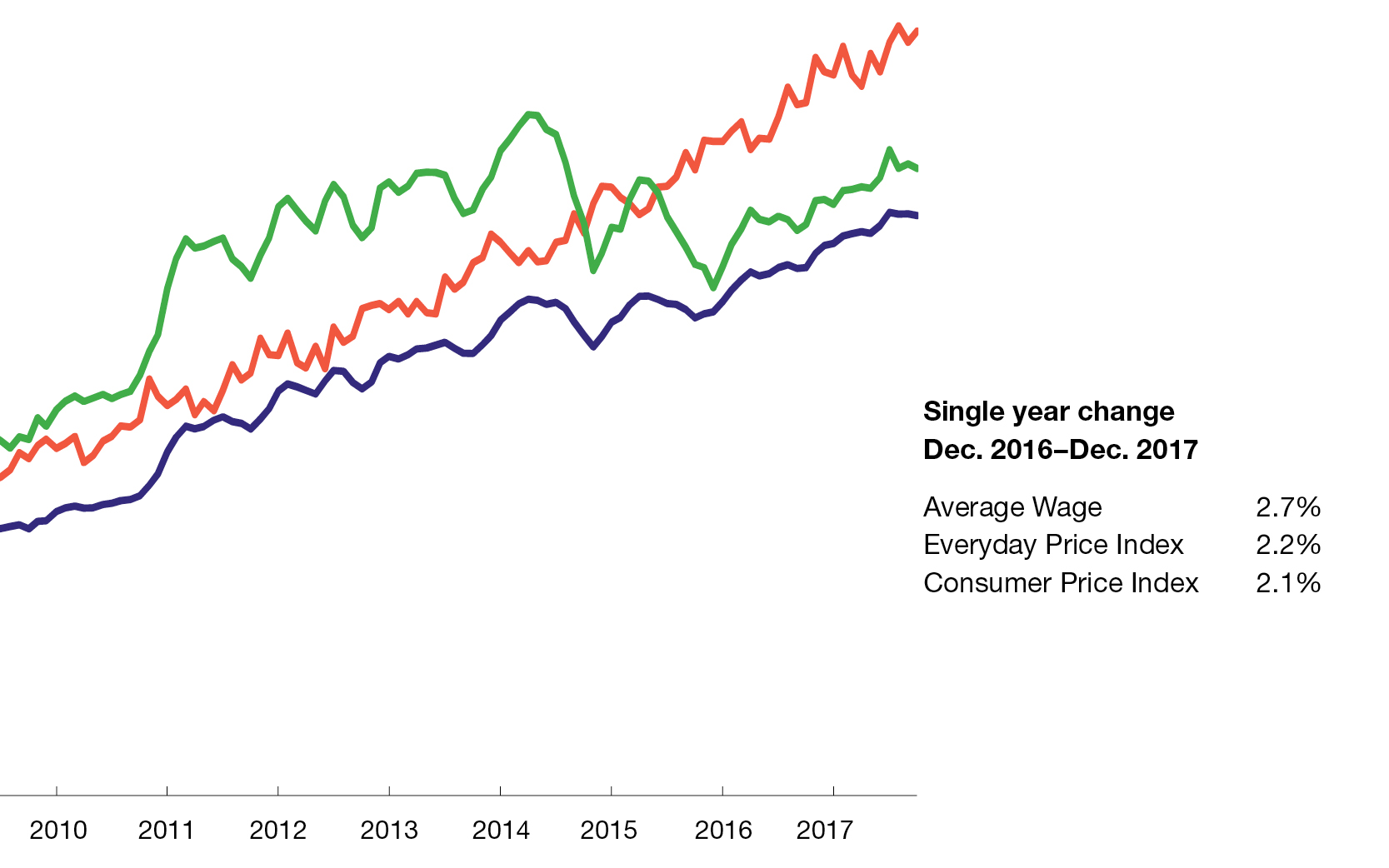All Economies Are Service Economies

The 40-year decline in American manufacturing jobs, from 22 percent to 8 percent of workers, has panicked many people. America’s shift from a manufacturing economy to a service economy is a catastrophe, they say, and something must be done soon to reverse the shift. If the “something” is simply the removal of government obstacles to free exchange, then no harm and only good would come from the remedy, although manufacturing would not regain its rank as a major employer. But those who lament the decline in manufacturing jobs — such as President Trump and several of his economic advisers — would increase the burden of government through more restrictions on trade. If they succeed, much harm would befall everyone sooner or later.
The decline in manufacturing jobs is indisputable. “From a peak of nearly 19.5 million US factory workers in 1979,” Mark Perry writes, “the number of manufacturing employees has steadily declined to a recent low in 2010 of 11.6 million workers before rebounding to slightly more than 12 million employees [in 2014].”
Why has manufacturing declined as a source of employment? Some blame global trade, but a much bigger reason is technology. The resulting increase in output per worker has reduced the need for manufacturing jobs, freeing up labor for things we couldn’t previously afford. As Perry notes:
The amount of manufacturing output produced per US worker … more than doubled in the 42 years between 1955 and 1997 from $40,000 to $85,000, and then more than doubled again in only 13 years between 1997 and 2010 to about $171,000 (all figures are expressed in constant 2014 dollars). Manufacturing output per employee last year [2014] of $171,538 established a new all-time record for the productivity of the American factory worker, measured in manufacturing output per factory worker.
Obviously, a decline in manufacturing jobs does not mean a decline in manufacturing. Contrary to popular misconception, manufacturing has not been “hollowed out.” Perry continues:
In inflation-adjusted constant 2014 dollars, US manufacturing output has increased more than five-fold over the last 67 years, from $410 billion in 1947 to a record-setting level of output last year of $2.09 trillion.… Although we frequently hear claims that the US manufacturing sector is dying or in a state of decline, manufacturing output in the US, except during and following periods of economic contraction like the Great Recession, has continued to increase over time, and reached the highest level of output ever recorded in 2014.
Manufacturing has declined as a percentage of GDP, but so what? Perry wrote in 2012:
The decline in manufacturing’s share of U.S. GDP over the last forty years is nearly identical to the decline in world manufacturing as a share of world GDP, which fell from 26.6% in 1970 to 16.2% in 2010. Therefore, we can conclude that the declining share of manufacturing’s contribution to GDP is not unique to America, but reflects a global trend as the world moves from a traditional manufacturing-intensive “Machine Age” economy to more a services-intensive “Information Age” economy.
Even if the change were unique to America, Perry added, there’d be nothing to worry about:
Manufacturing’s declining share of output isn’t a sign of economic weakness — it’s just the opposite. It’s a sign that advances in manufacturing productivity and efficiency are translating into lower prices for consumers when they purchase things like cars, food, clothing, appliances, furniture, and electronic goods. In the U.S., the price of goods relative to services fell by 52 percent between 1970 and 2010, so it’s not surprising that manufacturing’s importance in the economy has fallen significantly.
As spending on manufactured goods as a share of household income declines, it raises our standard of living, and for that “decline in manufacturing” we should celebrate, not complain.
Moreover, why disparage services? Making a living by rendering services to our fellow human beings is in no way inferior to making a living by providing products. Paul Thanos writes:
The services sector is wide and diverse and covers a wide array of sectors including retail, financial services, digital services, real estate, hospitality, education, health, social work, computer services, recreation, media, communications, and electricity, gas and water supply.… In addition to overall services employment, workers in “tradable” services sectors (meaning sectors whose output can be traded internationally) are qualitatively different than workers in non-tradable services or manufacturing. Many of these workers have a higher level of education and significantly higher earnings.
But we can take this analysis even further by understanding what Frédéric Bastiat, a 19th-century French free market economics writer, recognized — namely, that there is no essential difference between producing goods and rendering services. To produce a good is to render a service. In any exchange, each party in effect says, “I’ll spare you the effort of making this if you spare me the effort of making that.”
Or as Bastiat put it, “It is a matter of complete indifference whether I render my fellow man a direct service — for example, by performing a surgical operation — or an indirect service by making him some medicinal preparation.”
Thus, all economies are service economies. Government should keep its hands off.







